Cold Chain Logistics: Management Challenges & Solutions
The supply chain is a term used to describe all the components required to transport goods from beginning to end, from production to the end...
10 min read
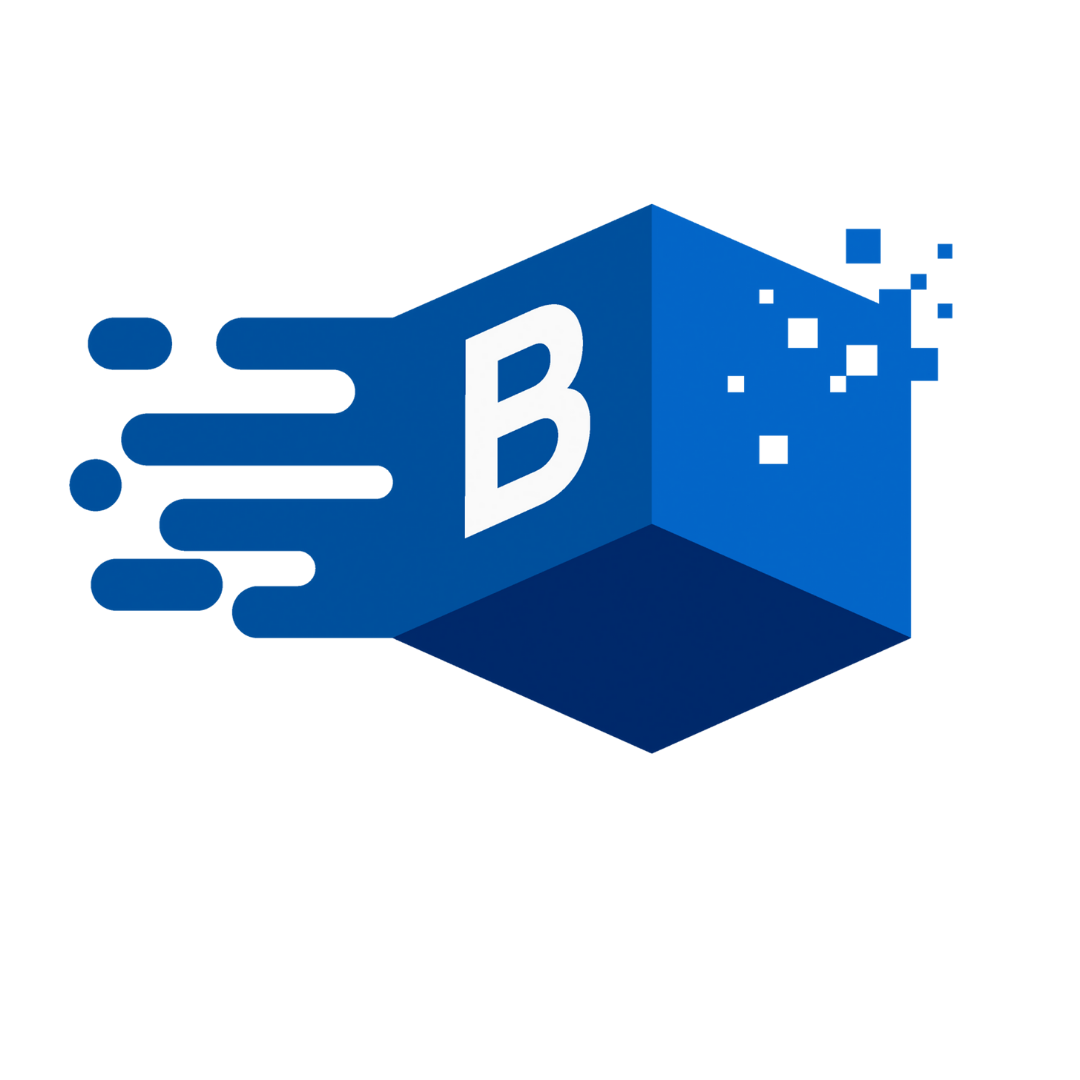 BUKU Marketing
:
Mar 15, 2023 1:00:00 PM
BUKU Marketing
:
Mar 15, 2023 1:00:00 PM
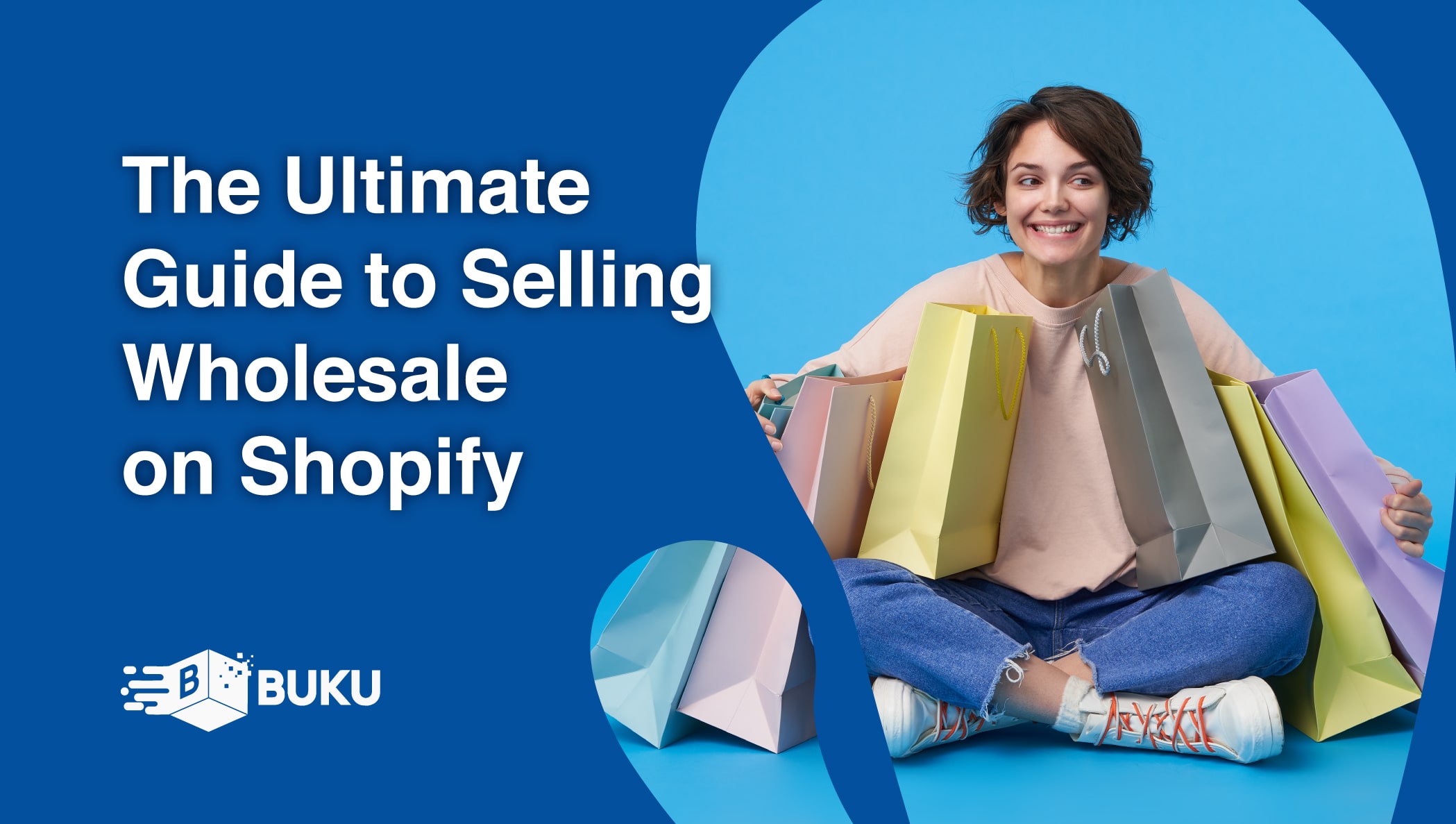
Shopify has become one of the most popular eCommerce sites on the internet. It's easy and inexpensive for aspiring entrepreneurs to sell online through Shopify. The company reports that more than 1.7 million eCommerce businesses have made a combined $200 billion selling on the platform.
Table of Contents
1. What Is A Wholesale Channel?
2. The Pros Of A Wholesale Channel
3. The Cons Of Selling Wholesale On Shopify
5. How To Get Started Selling Wholesale On Shopify
6. Promoting Your Wholesale Business
7. Tips For Selling Wholesale Successfully On Shopify
Shopify makes it easy for even beginner sellers to set up shop and sell their products to consumers. Its intuitive functionality and customizations make it an excellent platform for brands looking to establish themselves in a crowd of online retailers. Many need to learn how businesses can set up a wholesale channel directly through the platform.
Wholesale businesses buy products in bulk directly from the manufacturers and then sell those products to retailers. Those retailers then sell the merchandise to consumers.
Buying in bulk provides a price advantage for wholesale businesses, saving them significant money on their products. Also, this way of buying provides enough overhead to sell to retailers at a markup.
Suppose you’re considering selling wholesale on Shopify. In that case, it's essential to know the ins and outs of the trade - at least, if you want to be successful. This article will explain how wholesale businesses work, the pros, and cons of operating one yourself, and some helpful tips that you can use along the way\
Wholesale trade plays a vital role in the supply chain, allowing retailers to buy products in large quantities and sell them to retailers at a discount – while still making a profit for themselves. In essence, wholesalers play the role of a “middleman.”
They help manufacturers move large quantities of merchandise quickly and help retailers save money on their purchases because of the cost-savings that wholesalers get for buying in bulk.
The supply chain describes how merchandise travels from the manufacturer to the consumer. In essence, it describes how manufacturers get their products to consumers.
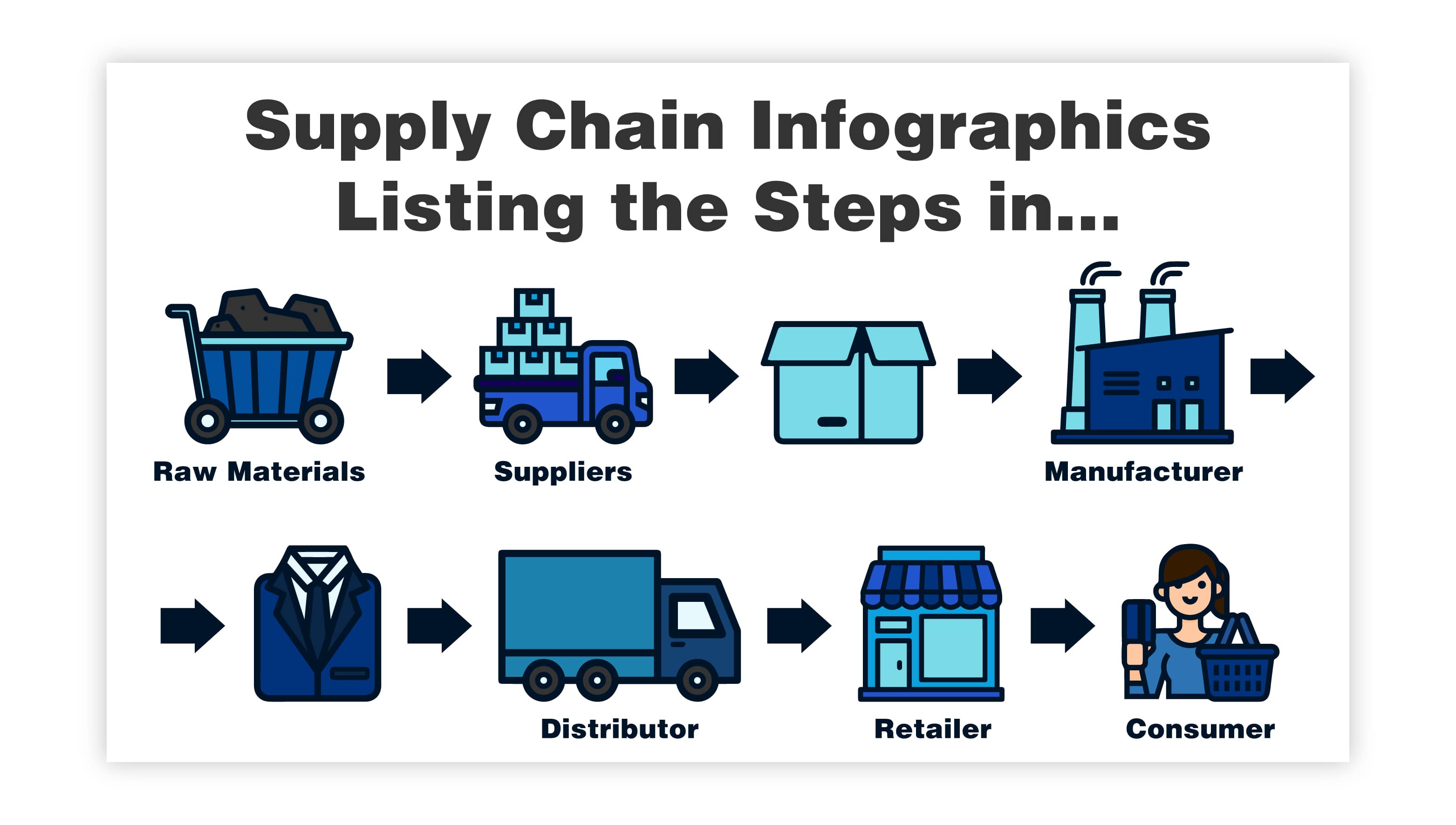
Every supply chain starts with the raw materials sold to a manufacturer to make their products. Those completed products sell to make a profit.
A direct channel means the manufacturer sells directly to the consumer. An indirect channel means the manufacturer sells to an intermediary, who then sells the products to the consumer.
A supply chain may have one intermediary or several. It may also include intermediaries like distributors, who sell on behalf of the manufacturer.
Wholesalers act as an intermediary in the supply chain, representing a link between the manufacturer who makes the products and the retailer who sells the products to the consumer.
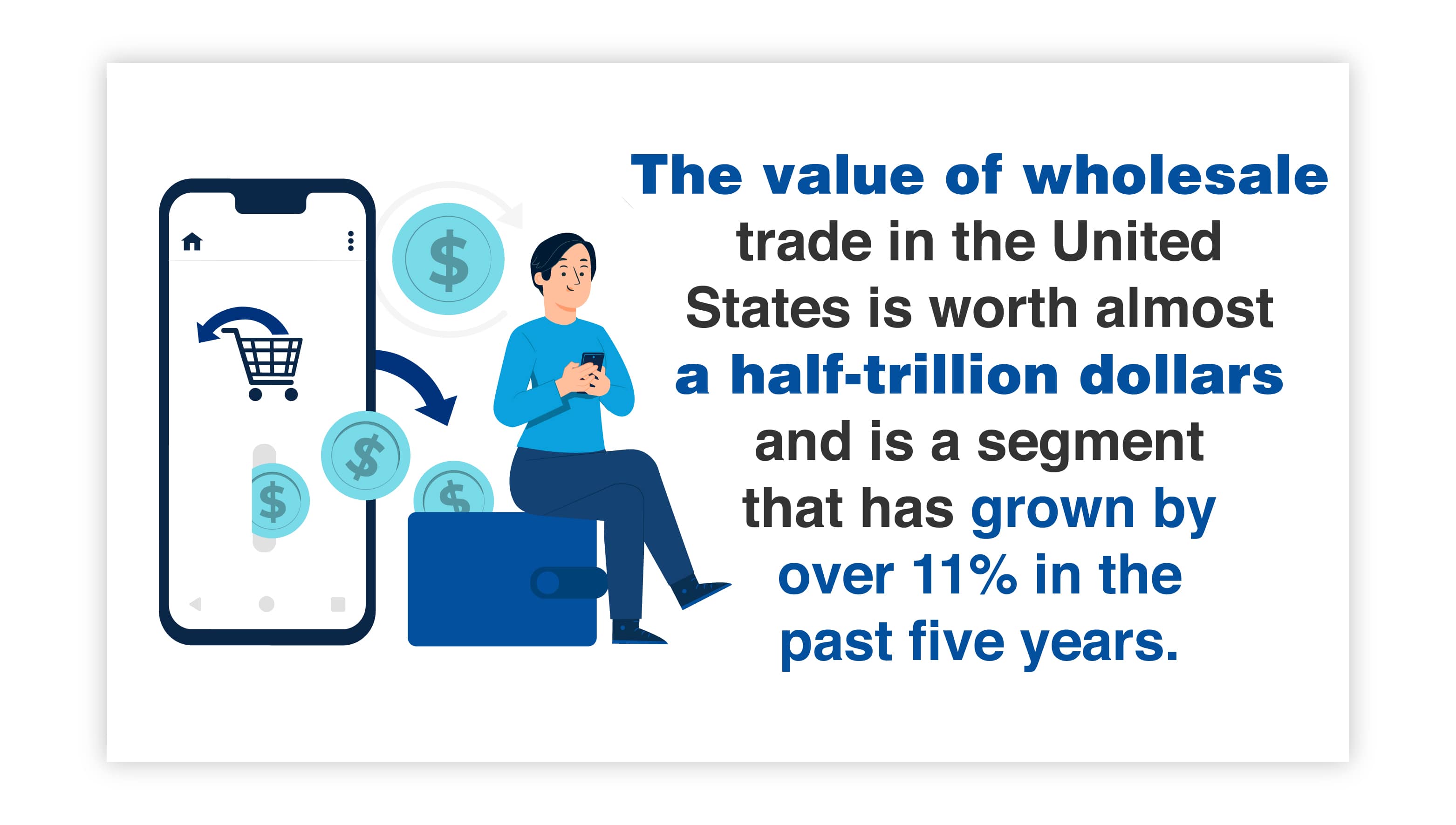
The value of wholesale trade in the United States is worth almost half a trillion dollars and is a segment that has grown by over 11% in the past five years. Sellers on Shopify have taken advantage of this growth by setting up wholesale storefronts on the platform.
Shopify Plus customers can set up a wholesale shop directly through their existing Shopify account or by integrating a Shopify wholesale app. There's also a wholesale marketplace on Shopify known as "Handshake," where retailers can sell products to verified Shopify merchants.
The Shopify wholesale channel allows you to set up a password-protected storefront for your wholesale customers. (“How to Open a Shopify Wholesale Store | Red Stag Fulfillment”) It works as an extension of your online store.
Still, Shopify lets you add wholesale-only products, independent branding for your wholesale storefront, and convenient self-service portals for your wholesale customers.
Selling wholesale on Shopify has many advantages for online retailers. And the great news is that Shopify Plus users can set up a wholesale channel alongside their consumer sales storefront. That way, you get the best of both worlds. Here are some of the biggest pros of becoming a wholesaler on Shopify.
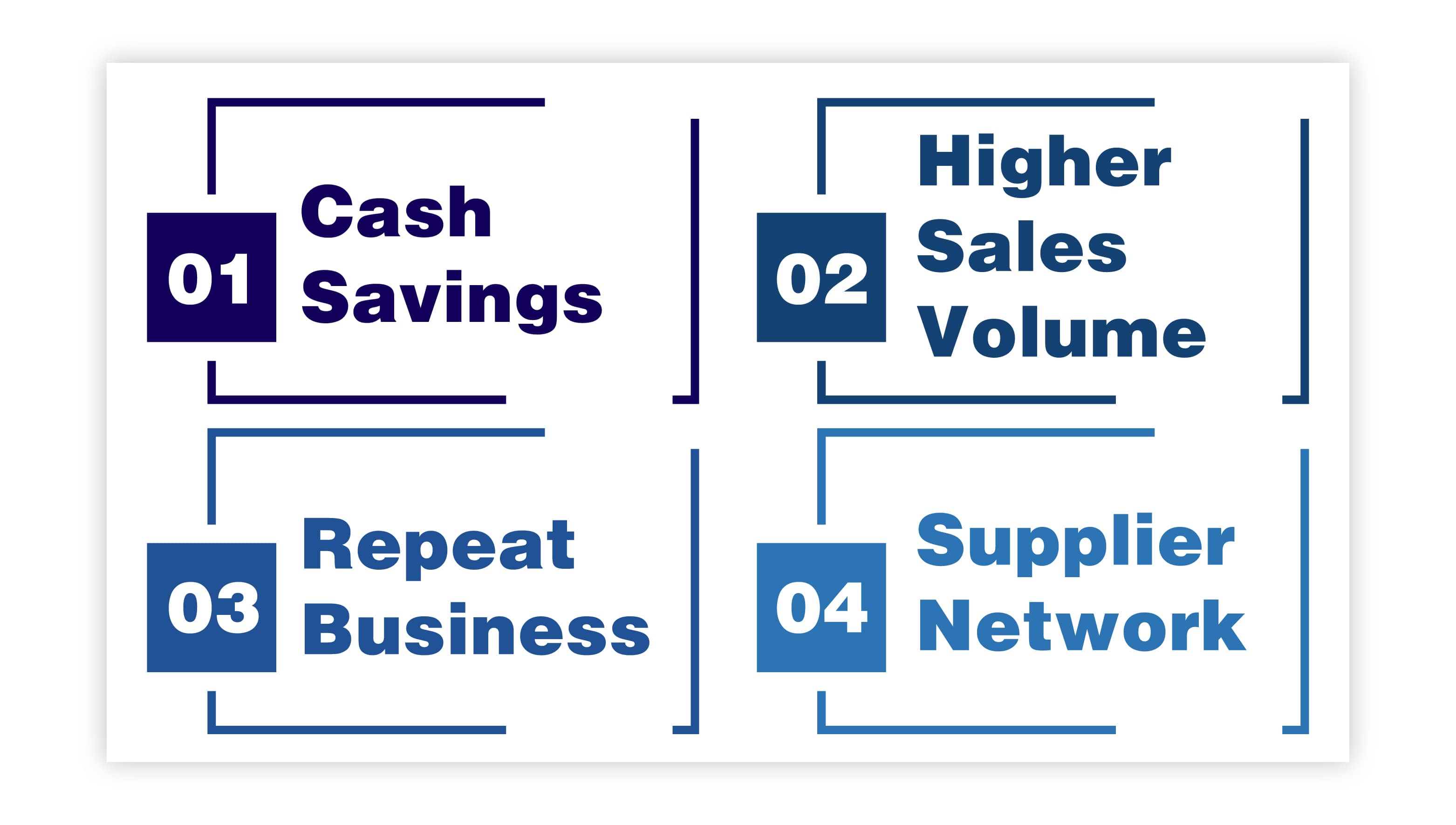
The most obvious draw for wholesalers is the money they can save buying in bulk. Manufacturers offer steep discounts for businesses that believe in large quantities. It benefits them by helping them move their merchandise quickly to the wholesaler by allowing them to save significant money on their purchases.
Those cost-savings pass to the retailer, who can buy products from a wholesaler cheaper than if purchased directly through the manufacturer.
When you buy in bulk, you can sell in bulk – which means more money for you. Consumers buying merchandise directly from your eCommerce site typically purchase in small amounts, usually one or two units at a time.
However, retailers buying from your wholesale channel want to buy enough products to support their consumer sales. That means they will be purchasing larger quantities than a single consumer. Those larger orders mean profits will add up quickly.
Another benefit of wholesale trade is that retailers who do business with you become repeat customers. If you’re selling a product that performs well for them, they will want to come back and replenish their stock of that item frequently. Business like this is precious for retailers.
Think of how much advertising money businesses spend to convert a single customer versus how much a single customer spends on your site. Now consider the lifetime value of a wholesale customer in comparison.
The nature of the wholesale business means you will be working with numerous suppliers and manufacturers. Building a solid supplier network is vital to success as a wholesaler because you need to know that you will have a supply of high-quality products ready to go when it's time to do business. This networking allows you to build valuable relationships that you can lean on as your business grows.
We’ve covered the good, but what about the bad? Selling wholesale on Shopify does come with a few challenges that are unique to the process.
It’s up to you as the business owner to identify these drawbacks and decide if the pros outweigh the cons.
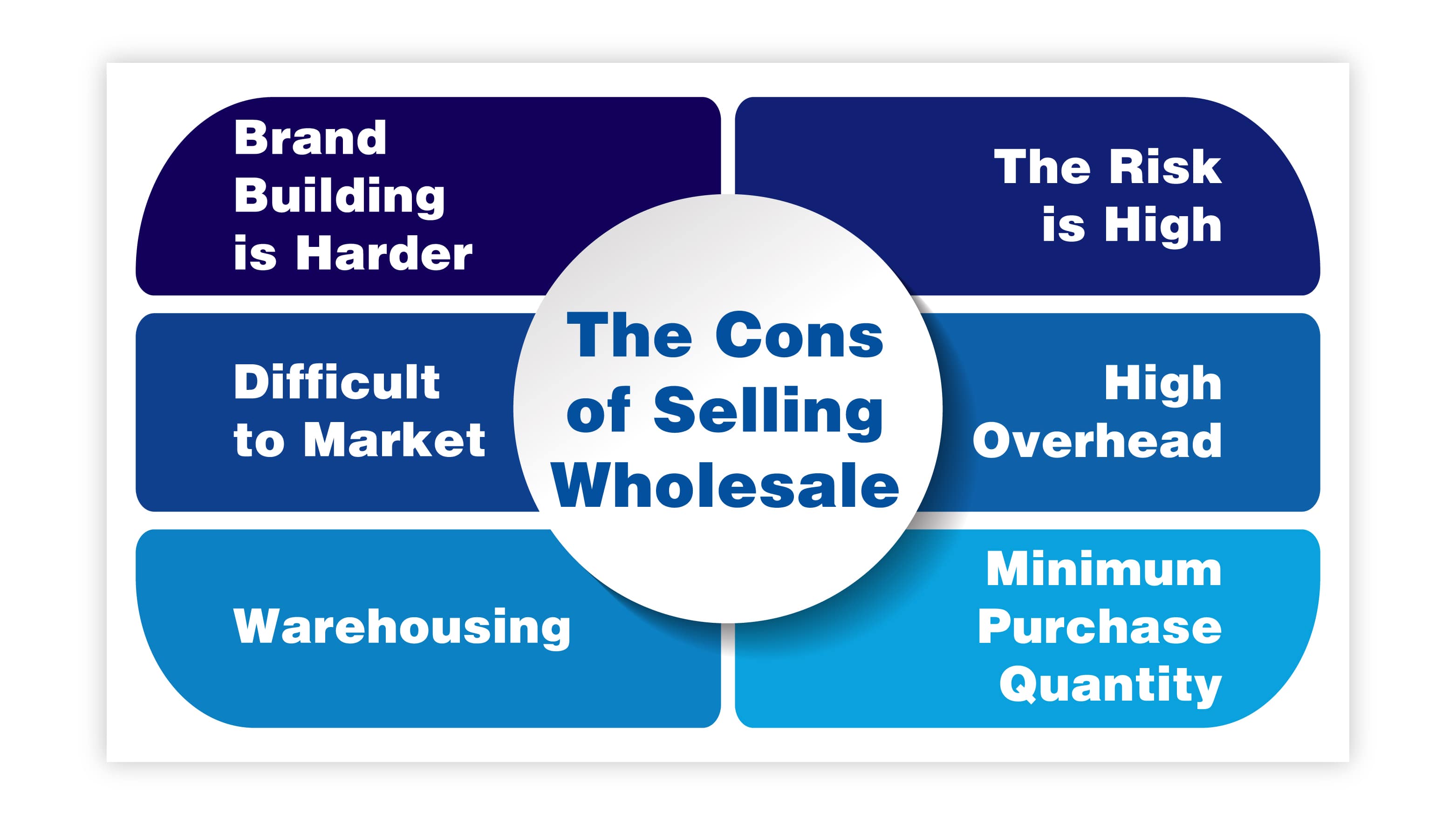
Here are some cons of starting a wholesale business on Shopify.
When you play the role of a wholesaler and you sell merchandise to retailers, the role of a middleman can be challenging for businesses looking to establish a brand identity because you relinquish a lot of control over how the product is merchandised and sold.
However, building a recognizable brand is still essential for wholesalers because it establishes authority and draws the attention of the retailers who will buy your products.
Wholesalers still play a role in marketing their products, and marketing is essential for retailers selling those products to consumers. Although some of the control is out of your hands as a wholesaler, it's still vital that your brand identity and messaging are visible and consistent. That means taking a portion of the marketing responsibility on yourself.
When you buy in bulk, you must store in bulk. That means you must invest in ample warehousing space to hold the merchandise you purchase from the manufacturer. You will also need to establish excellent picking, packing, shipping, and inventory processes if you want your wholesale business to run smoothly.
One of the most significant drawbacks of wholesaling is that you take on quite a bit of risk when you buy products in large quantities. If you can't sell those products, you're stuck with them. Smart buying and selling are essential to balancing a thriving wholesale business. You want to buy something other than 10,000 units of a product that takes up space in your warehouse and never sells.
Wholesalers must navigate considerable overheads in the buying and selling process. You must have ample inventory to fulfill large orders from retailers. However, you also want to avoid buying merchandise that never moves from your warehouse floor.
The most significant advantage of running a wholesale business is the cost savings from buying in bulk. But this also represents a drawback. Many manufacturers set a minimum quantity threshold for wholesalers to get that discount. Without careful planning, you could sit on a pallet of merchandise nobody wants.
There are different ways eCommerce retailers can sell to their customers, whether those customers are single consumers or retailers. Selling wholesale on Shopify has advantages because of the cost savings businesses receive for buying in bulk. But it also requires a significant capital investment and ample warehousing space to hold all that product.
Many smaller online retailers use a business structure known as dropshipping to avoid the upfront costs of selling online. Let’s look at the difference between wholesale and dropshipping.
Dropshipping is a process that allows retailers to skip the warehouse and outsource their packing, picking, and shipping processes to a third party. Outsourcing can be advantageous for businesses with limited capital to invest in merchandise or space because something moves once a customer orders.
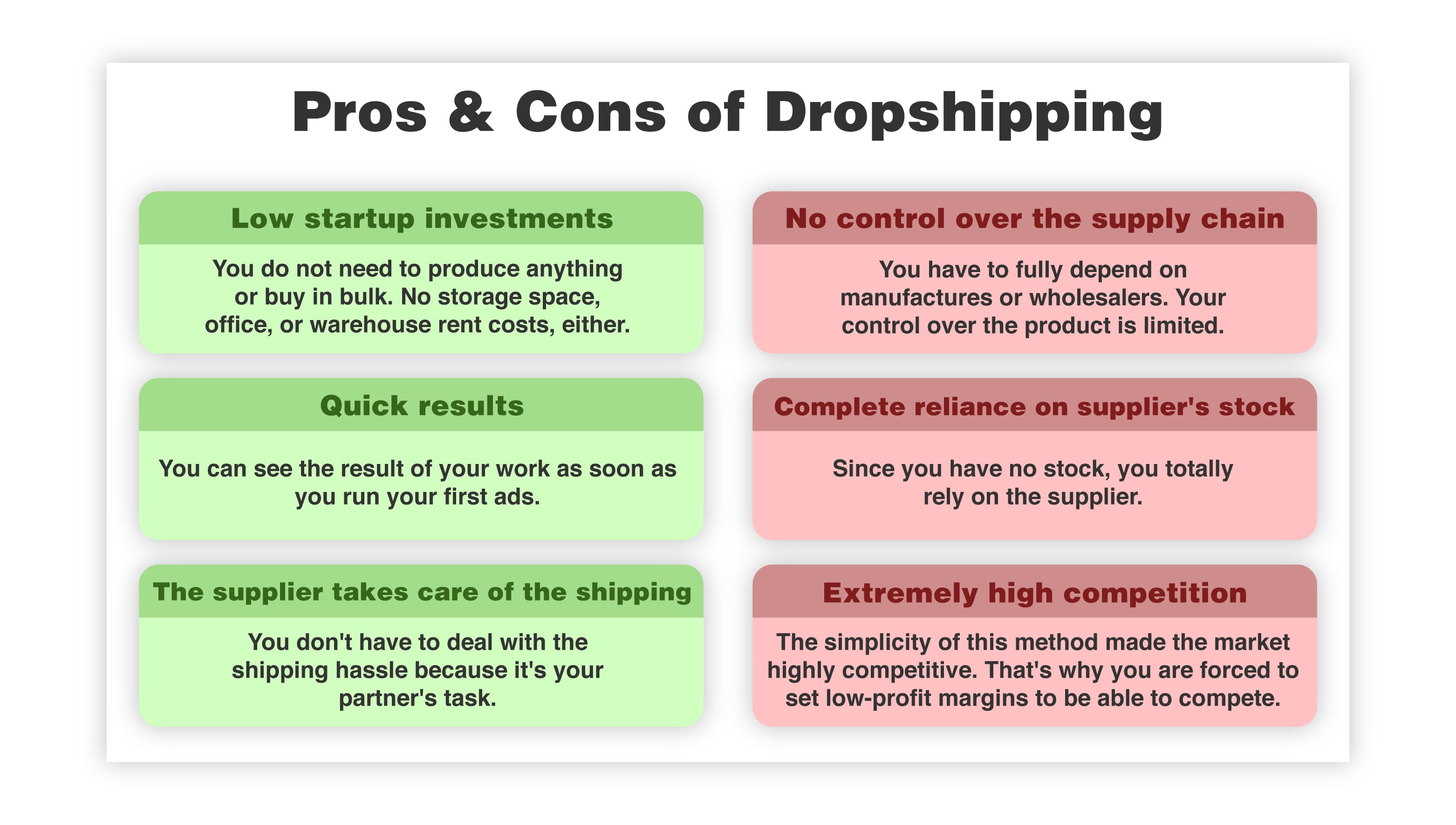
Drop shippers can only buy small quantities of merchandise ahead of time. They can outsource all the work involved with moving and storing their products.
When eCommerce businesses use dropshipping, they sacrifice control over their fulfillment process. When a customer places an order, you contact your dropshipping service, and they handle the rest. That means any mistakes made in the picking, packing, or shipping are out of your hands. That's why choosing a reputable and reliable dropshipping service is essential for success.
On the other hand, wholesalers buy a large quantity of merchandise directly from a manufacturer or distributor. These large purchases allow wholesalers to take advantage of steep discounts offered by the manufacturers and then pass those savings on to the retailers who purchase them to sell in their stores.
Wholesalers must invest significant upfront capital in covering these large orders. And they need a warehouse, workers, and processes to help them fulfill and ship orders from retailers.
Wholesalers need a lot of cash upfront to support their business process. They need enough capital to invest in large quantities of merchandise and a place to store all those products until the retailer can sell them.
They also need a support structure like warehouse processes and employees to manage the fulfillment process. Small businesses with a limited budget will need help to jump into the wholesale system headfirst.
Choosing a business structure best suited for you means examining the pros and cons of each. It also requires some deep thought about your capabilities as a business. If you're starting small and working with a limited budget, focus on a dropshipping format first. The investment cost to get started is lower, but because you are not accessing those bulk-buying discounts, so are the profit margins.
Selling wholesale on Shopify requires careful planning and investment. Fortunately, Shopify makes it to set up your wholesale channel directly through their Shopify Plus platform or by choosing a Shopify wholesale app. Here's how to get started as a wholesaler on Shopify.
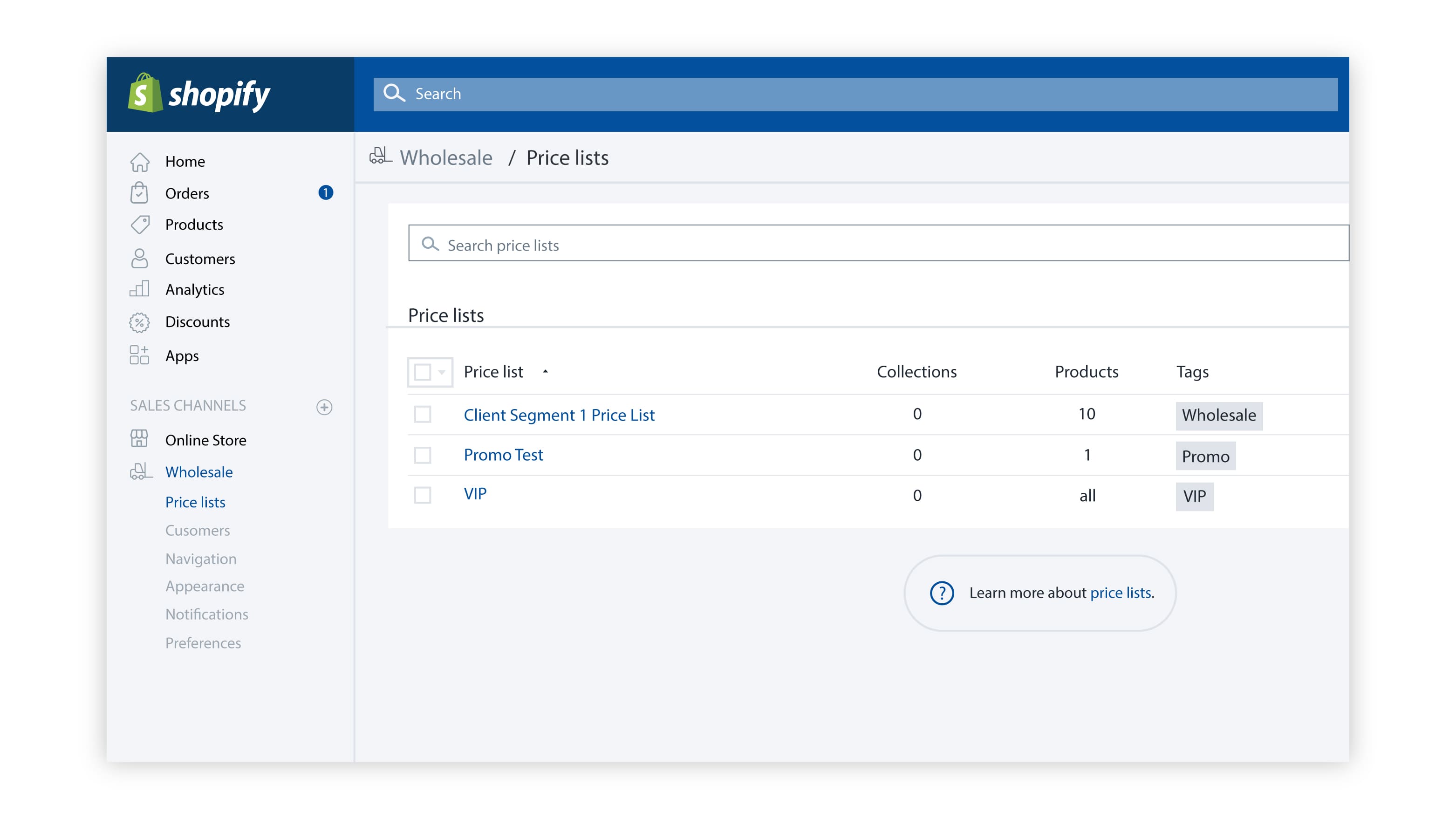
Adding a wholesale channel is easy if you are a Shopify Plus customer. Follow these steps to get started:
Tada! That's it. Your Shopify wholesale channel is set up. However, you're still getting ready to do business. You will need to do some configuring and make some decisions before you get started. And you will need to create accounts for your wholesale customers before they can access your password-protected wholesale channel.
The Shopify wholesale channel makes doing business easy for your wholesale customers. They get access to a self-service portal that allows them to place orders 24/7.
They can view past orders and invoices to make reordering easy. And they can access automatic order tracking to view their order status in real-time. All of this means less work is required on your part to manage the wholesale portion of your business.
Selling wholesale on Shopify will require planning and foresight. It would help to have a wholesale channel, products, and customers. But like any business, you will also need to promote yourself.
There is stiff competition in the eCommerce market; the same truth applies to wholesalers. You must get out there to build a successful brand and help retailers find your business.
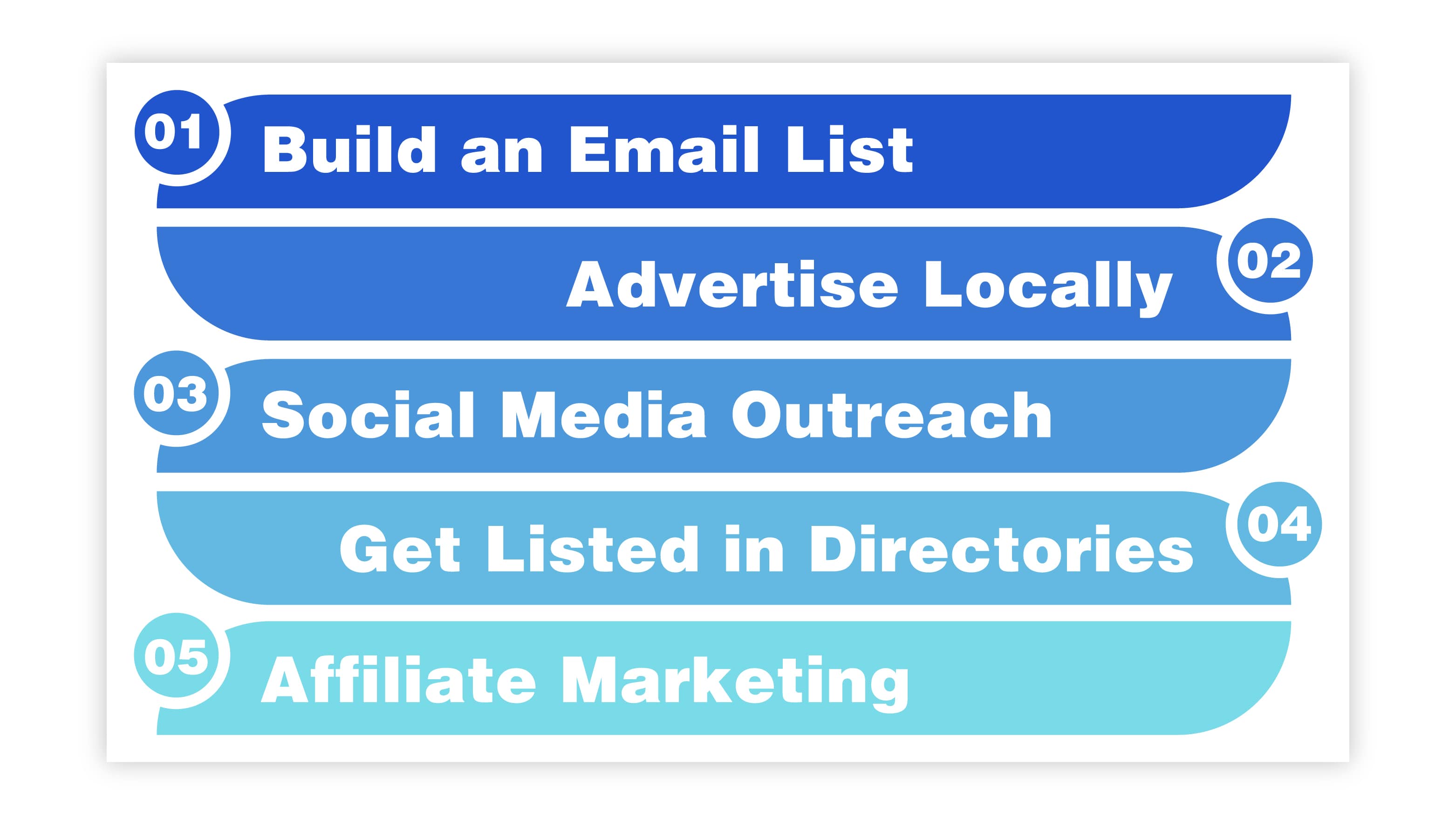
Here are some tips on promoting your wholesale business:
Accessing your customer's email addresses is a significant first step in promoting your business. You can ask customers to opt-in to your email list directly or through on-site popups and signup forms.
These methods allow you to build a valuable list of contacts to whom you can send messaging and advertising now through their inbox.
Online selling allows businesses to access a global customer base, which can be a great advantage. But pay attention to the value of local advertising as well. You can participate in local trade shows and expos to create local exposure for your wholesale business, and build valuable networking relationships with local retailers.
Social media is a great way to promote any business. You can build a free account on a platform, opt for some paid advertising, or use a combination. Social media allows you to create visibility for your brand, advertise promotions and products, and build a loyal following.
However, please don't set up a social media presence and then neglect to monitor it, or you risk alienating your customer base.
Websites like Yelp and Google My Business provide an easy way for customers to find your business. You can also pay for a listing in directories dedicated to wholesale companies. This way, customers who are explicitly seeking wholesalers will easily be able to find your business.
Many retailers set up an affiliate marketing program to provide endless marketing opportunities. Affiliate marketing works when marketers, influencers, or websites sign up to be an affiliate for your brand and advertise your services.
They then earn a commission whenever their affiliate link causes a successful conversion.
We’ve mentioned it several times. Still, it is worth repeating selling wholesale on Shopify requires careful planning. With such a significant investment and the risk of starting the wholesale business, you want to look before diving in headfirst. That's a formula for failure.
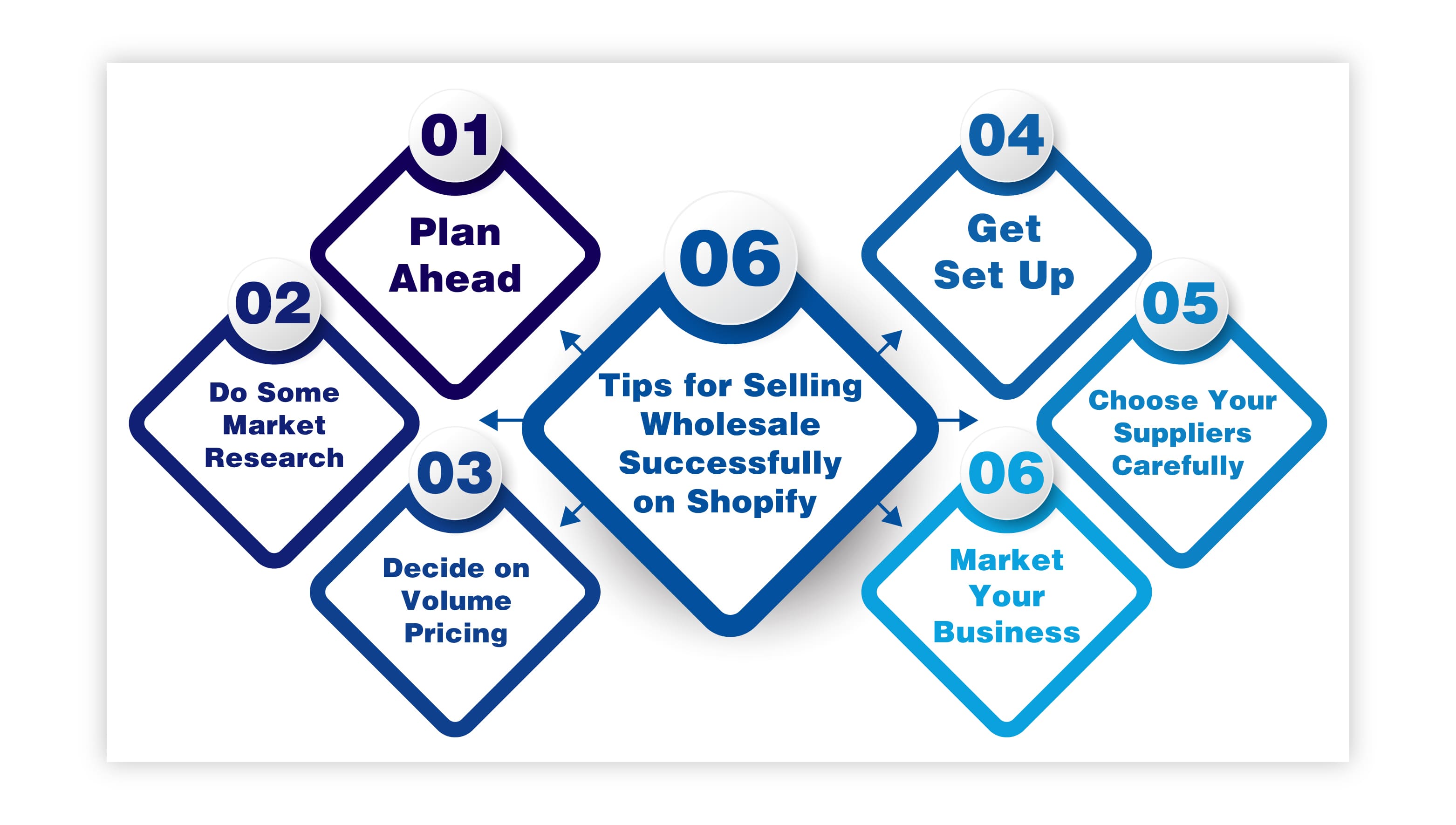
Instead, look at some of our tips for selling wholesale successfully on Shopify. Consider these things when planning your wholesale business.
Preparation is the key to any successful business. Before selling your first product, you should have a clear path for every business step. That means having a list of products you plan to sell and knowing how much each product will cost you per unit so that you can set your pricing accordingly.
Market research will give you a better idea of what your competition is doing and what you will need to compete with them. Check into wholesalers who deal in similar products and look at their pricing structure, branding, and advertising methods. And remember the retailers who will be buying your products.
Like wholesalers are looking for a bargain for buying bulk from manufacturers, your retail customers are looking for a steal from you. Offering discounts on large orders can provide an edge over your competition. You can also set a minimum order quantity to encourage retailers to place larger orders.
Ensure every aspect of your wholesale channel is up and running before accepting orders – down to every product, price, button, and branding. Make sure your suppliers are in place and that your processes are established. Test out your storefront and ordering process beforehand to identify any snags.
The suppliers you work with as a wholesaler will play a prominent role in your success. You rely on them to keep you stocked on your customers' desired products. Please choose carefully and examine the quality of the products, the price you are offered, and their reliability in fulfilling your orders.
You can only expect to be successful with a marketing strategy in place. Decide how much of your budget you have for marketing and how you can get the most value for those advertising dollars.
Selling wholesale on Shopify opens a new world of possibilities for eCommerce businesses. There are many opportunities for wholesalers, and Shopify provides an easy way to get started. But like any business decision, choosing to sell wholesale to retailers requires a lot of forethought and careful planning.
Wholesalers access a whole new customer base by marketing their products to retailers. And because they buy in bulk directly from the manufacturers, they get the advantage of steep discounts and cost-savings, which they can pass on to their retail customers.
The downsides of the wholesale business center are around the risk involved and the upfront capital required to get started. You can only expect to jump into wholesaling with an investment.
The large quantities of merchandise that allow for lower per-unit prices also need a more extensive bank account – and a place to put all that product until you can sell it.
Suppose you're considering getting into the wholesale business on Shopify- good for you! This article ensures you know what can become a profitable and successful business. But take our advice and put a plan in place before you get started. When done correctly and with a solid foundation, wholesaling can open a new world of opportunity and profit. Happy selling!
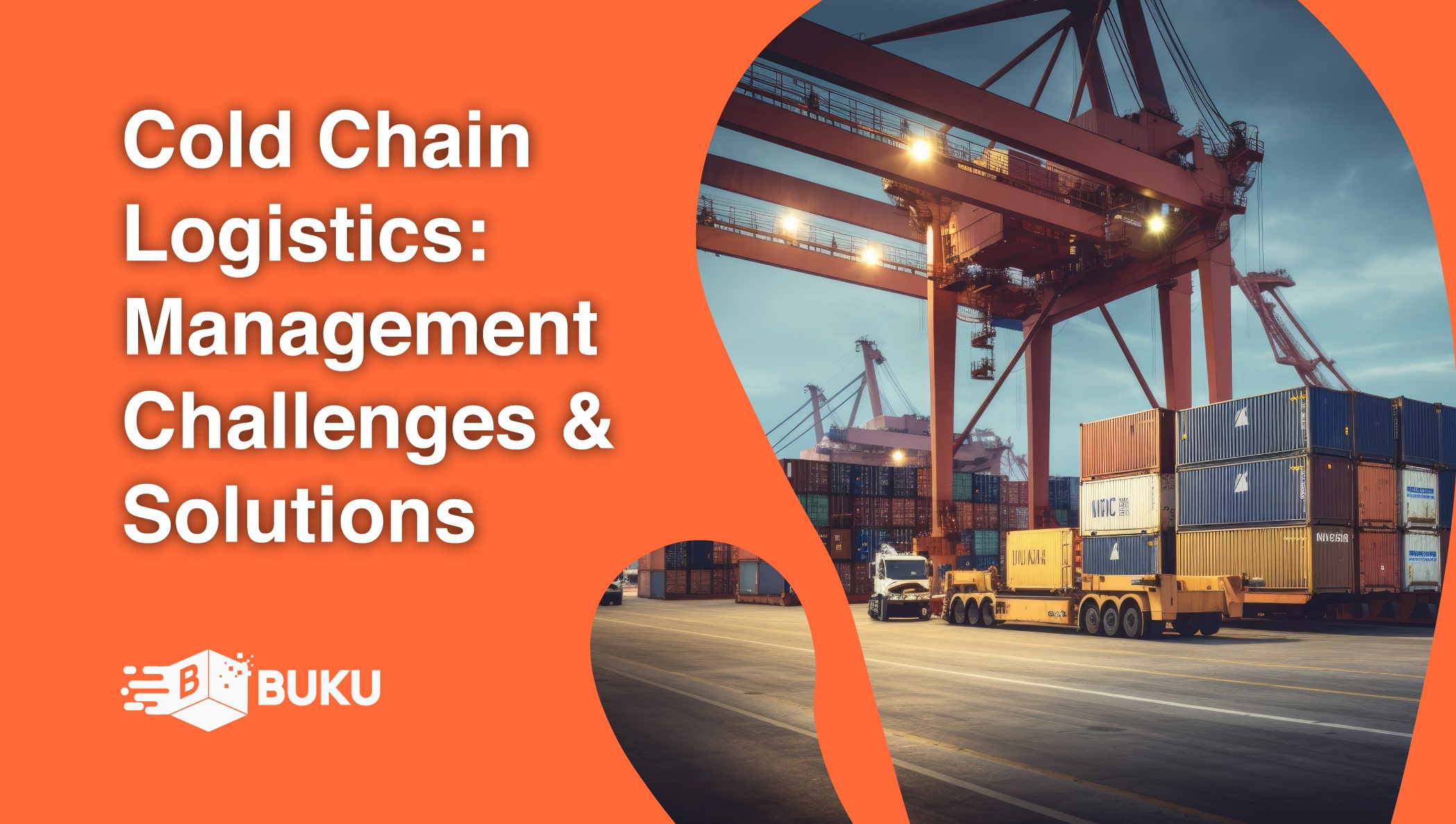
The supply chain is a term used to describe all the components required to transport goods from beginning to end, from production to the end...
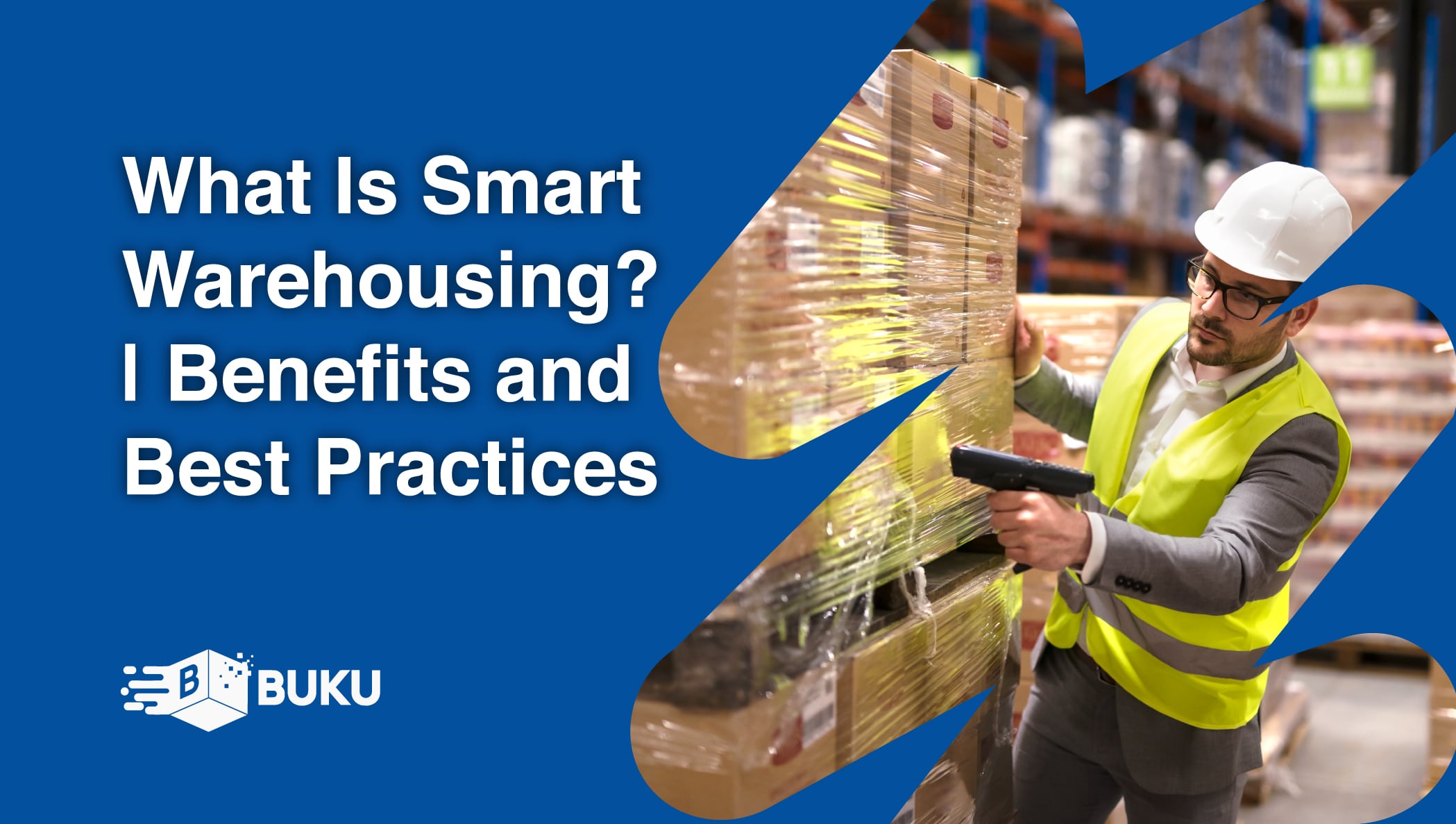
A smart warehouse is a large building where raw materials and other consumer goods are stored using machines, computers, comprehensive software, and...
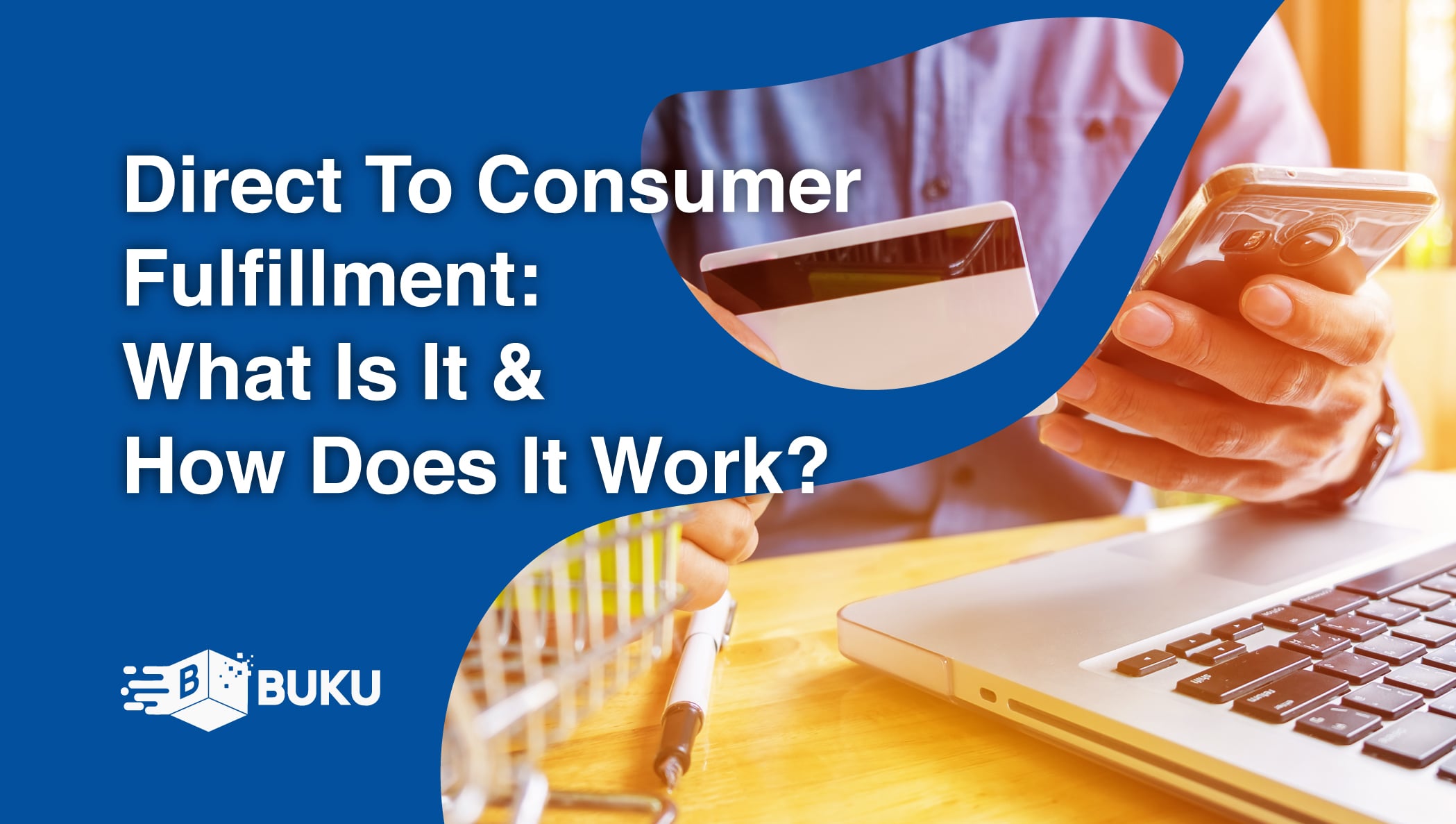
Direct-to-consumer (DTC) fulfillment is a strategy that helps brands sell and deliver their products directly to customers more efficiently while...